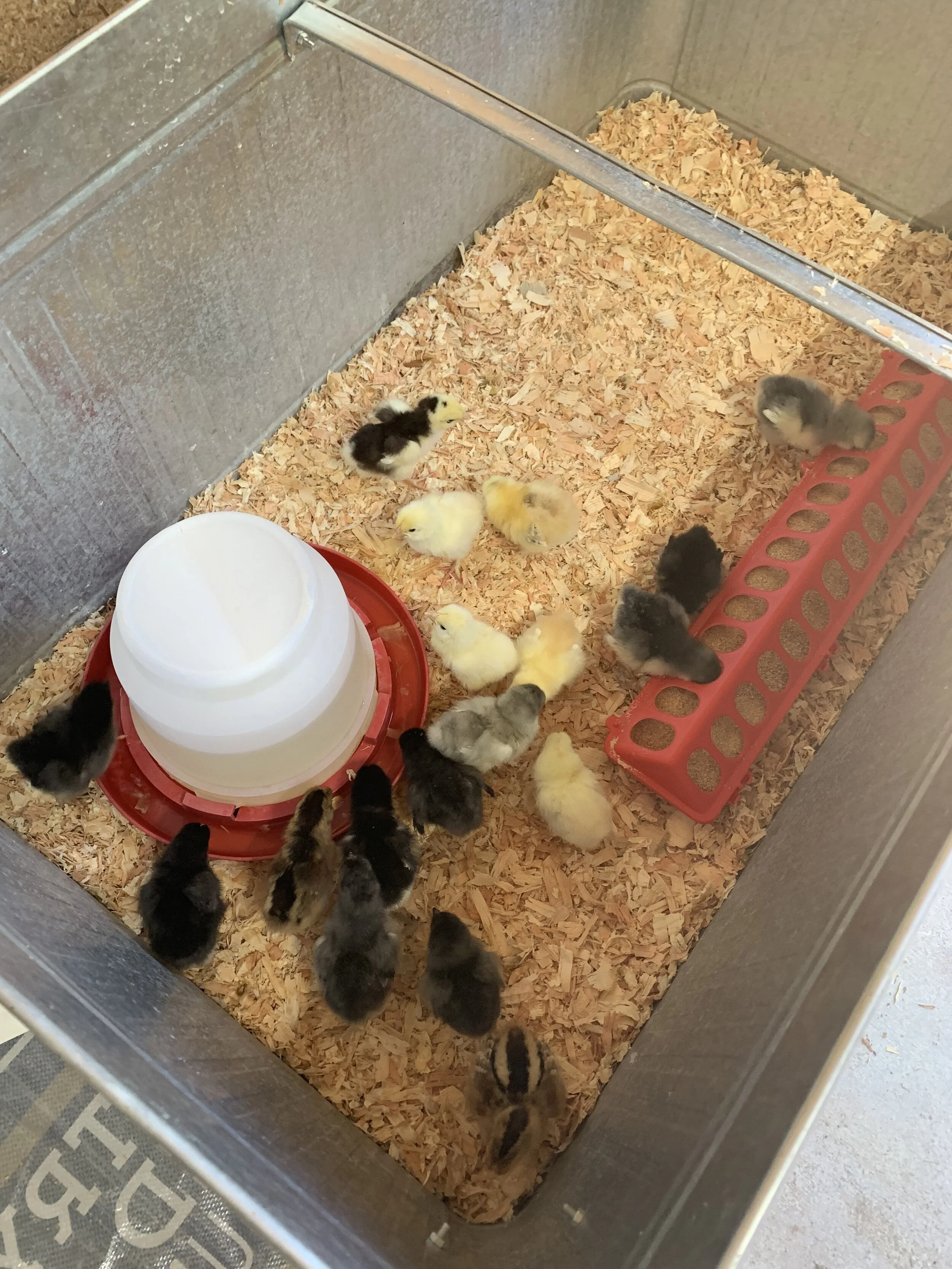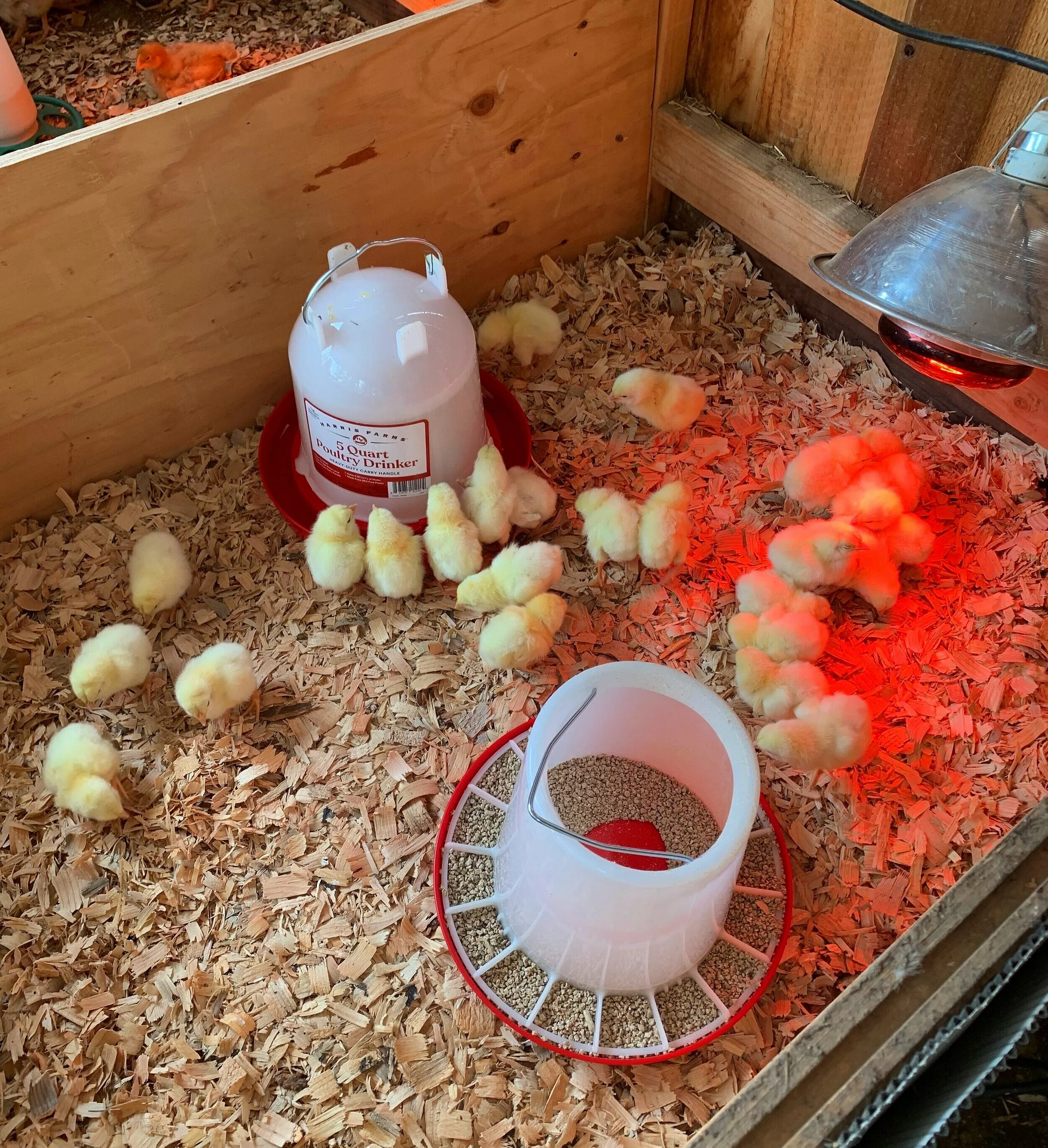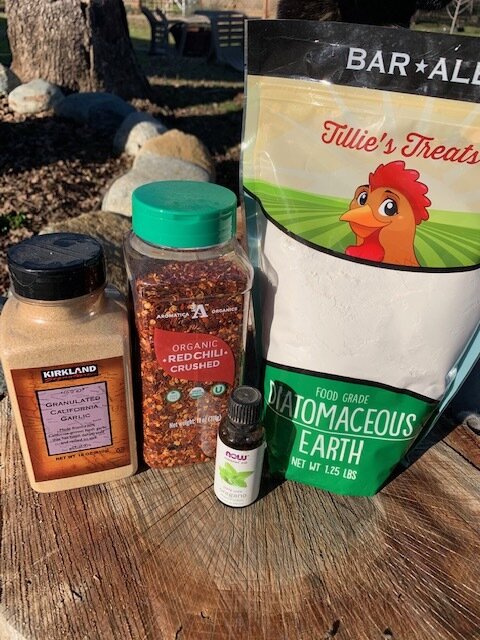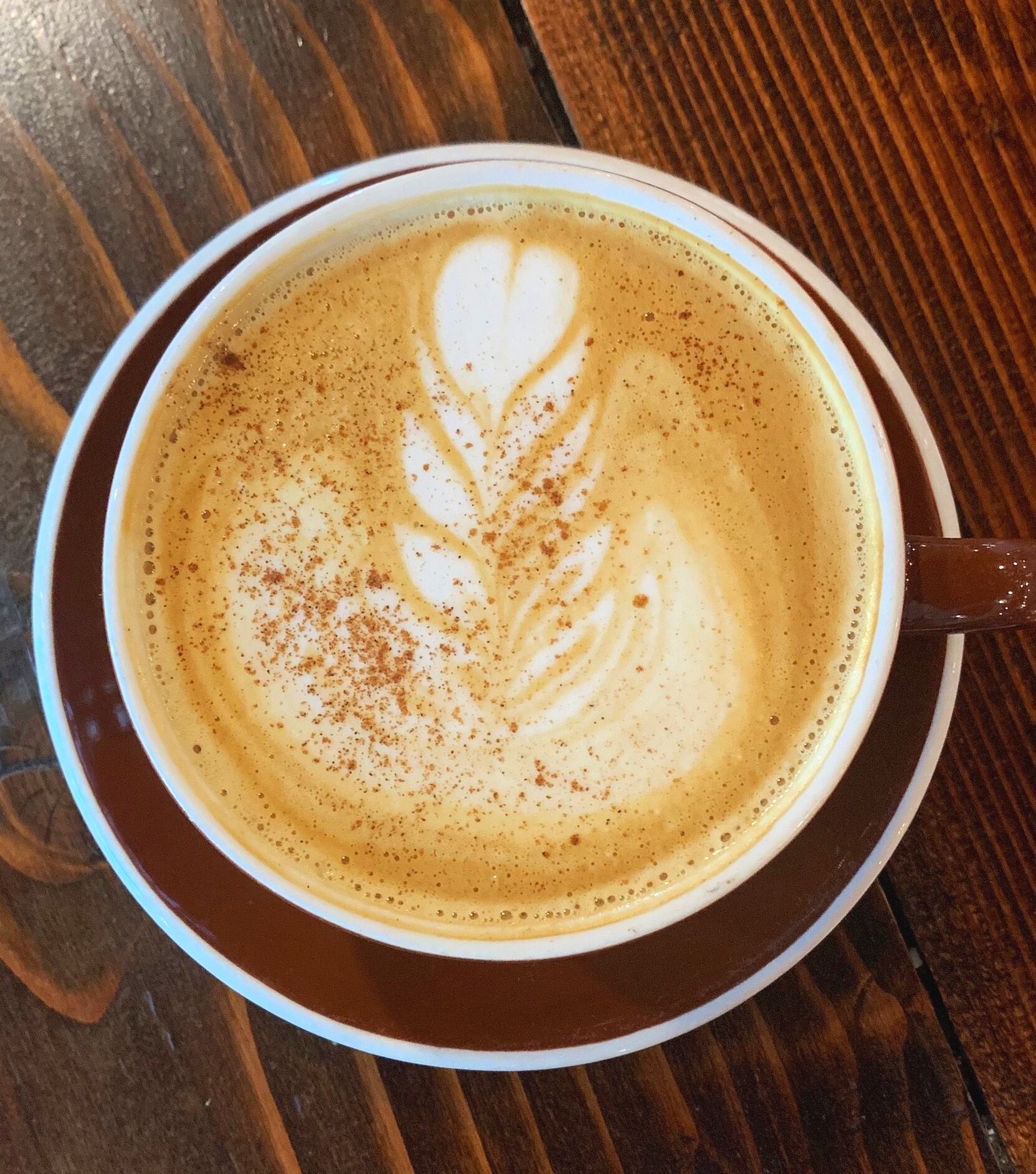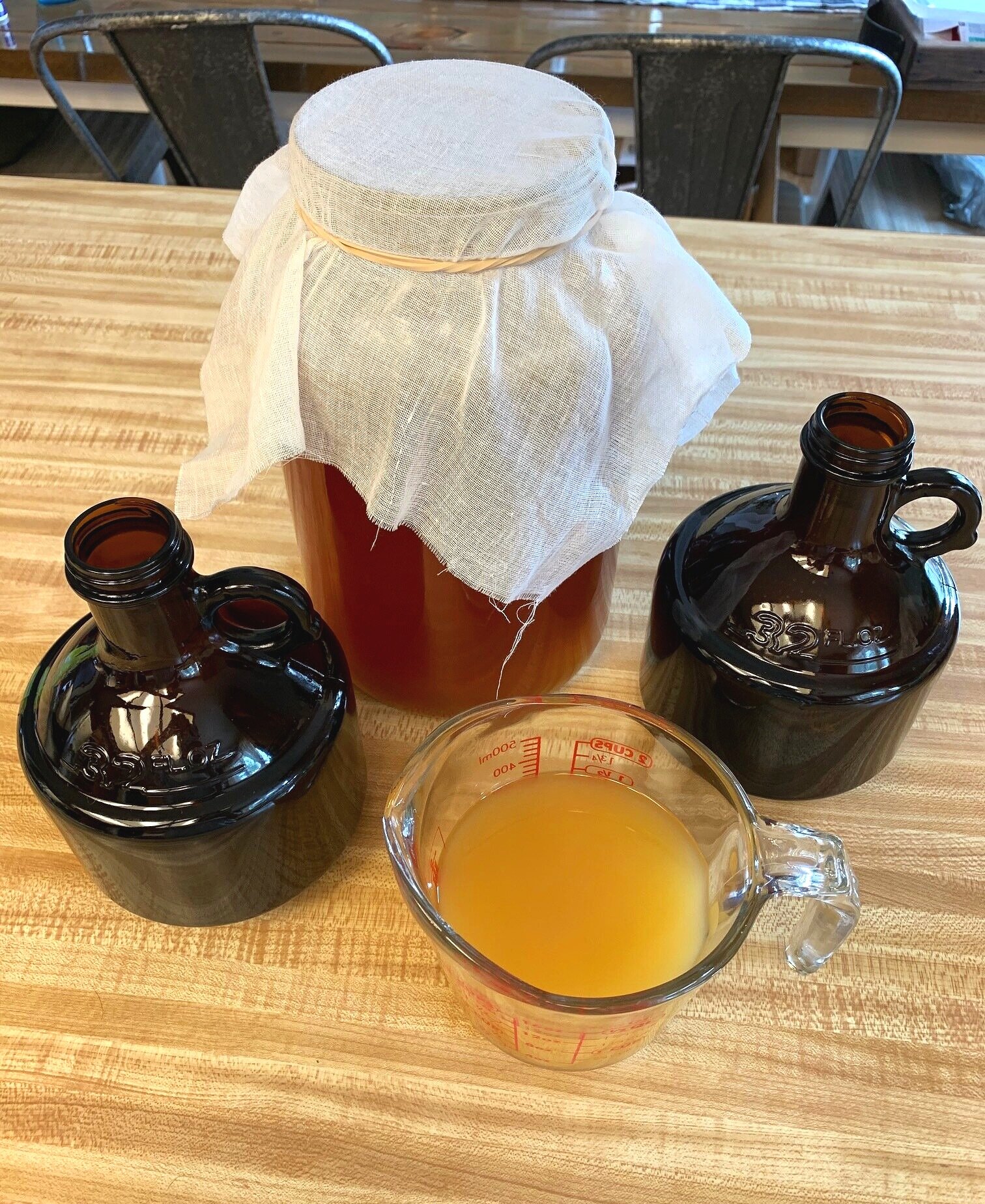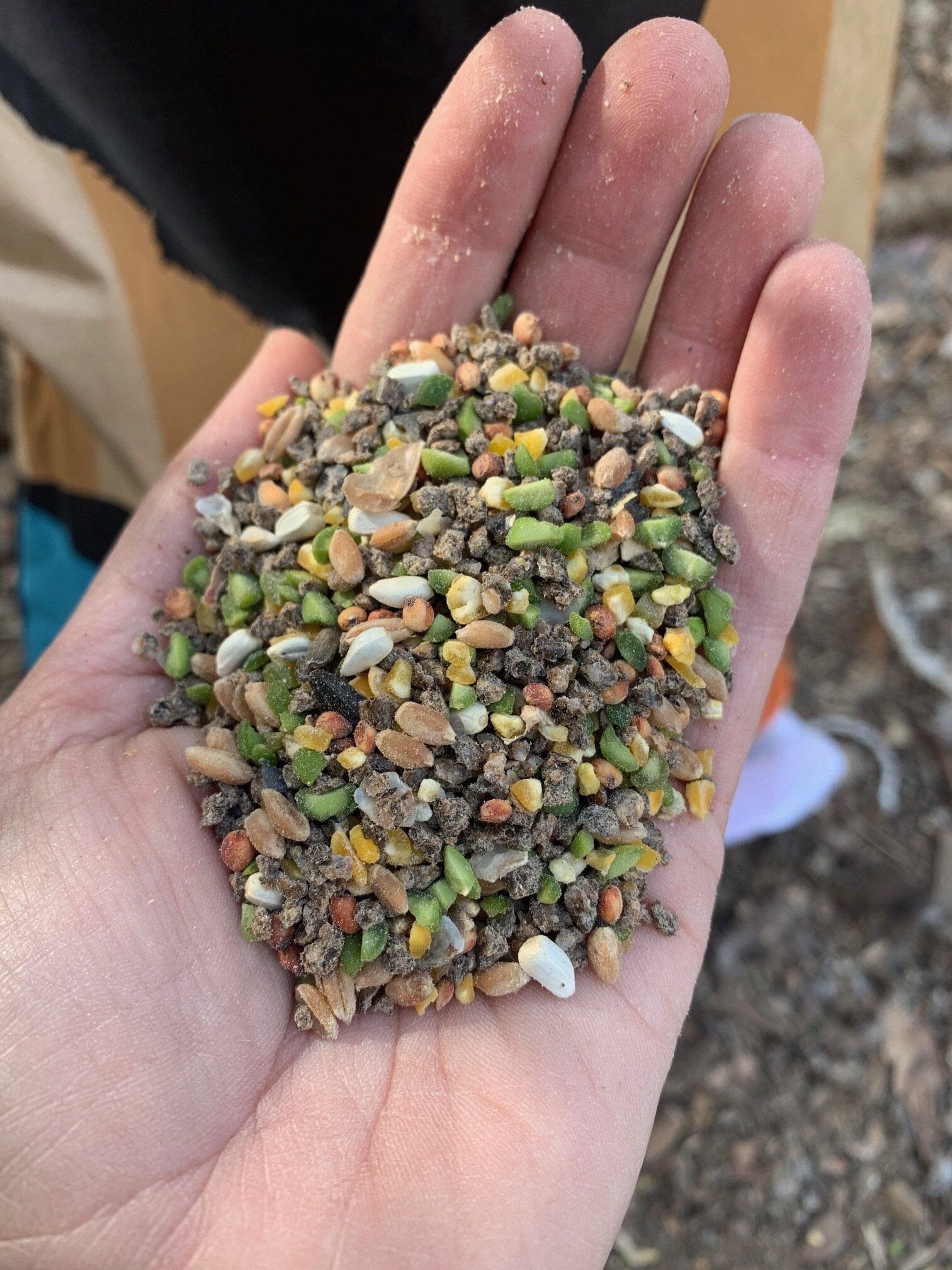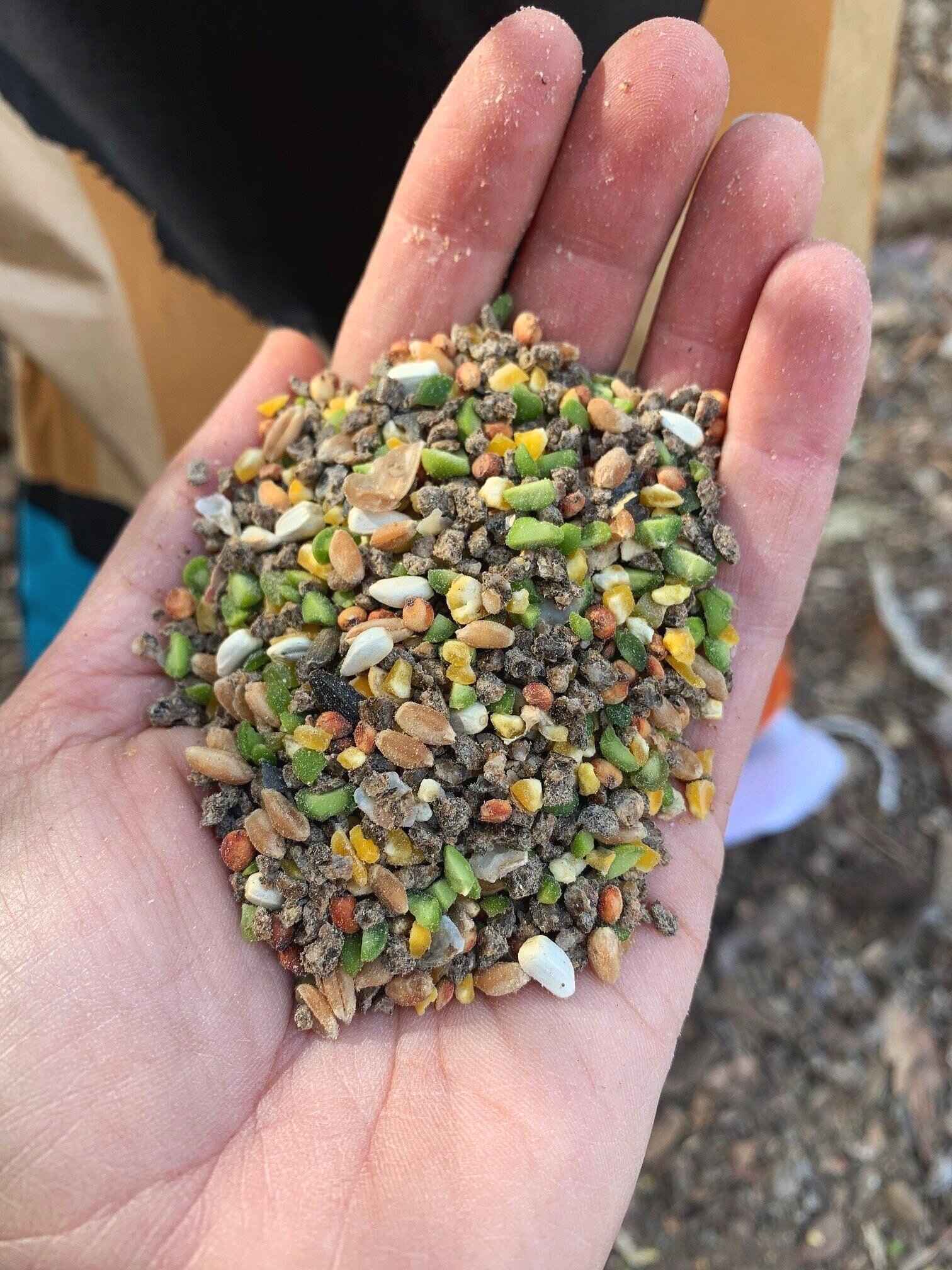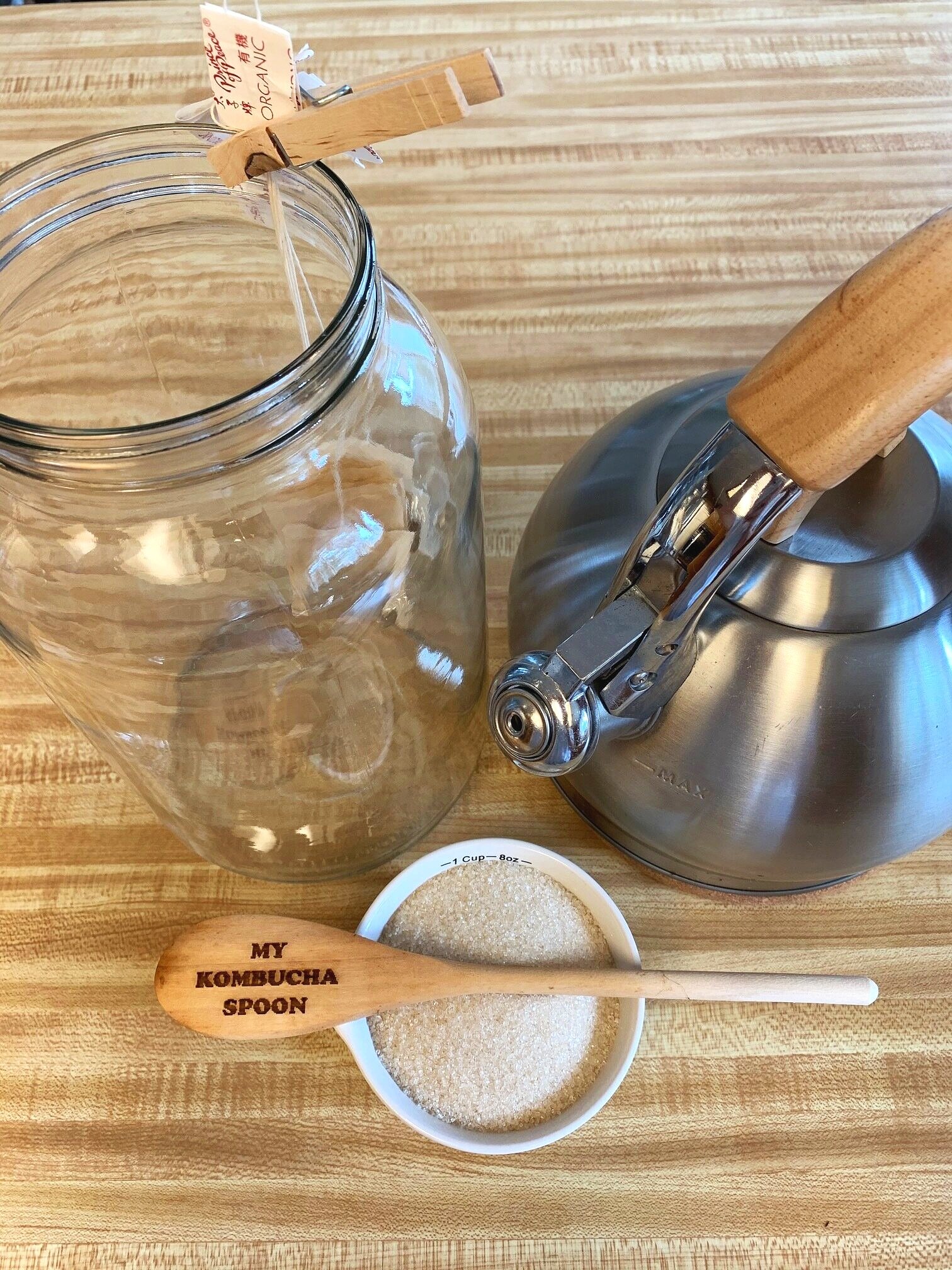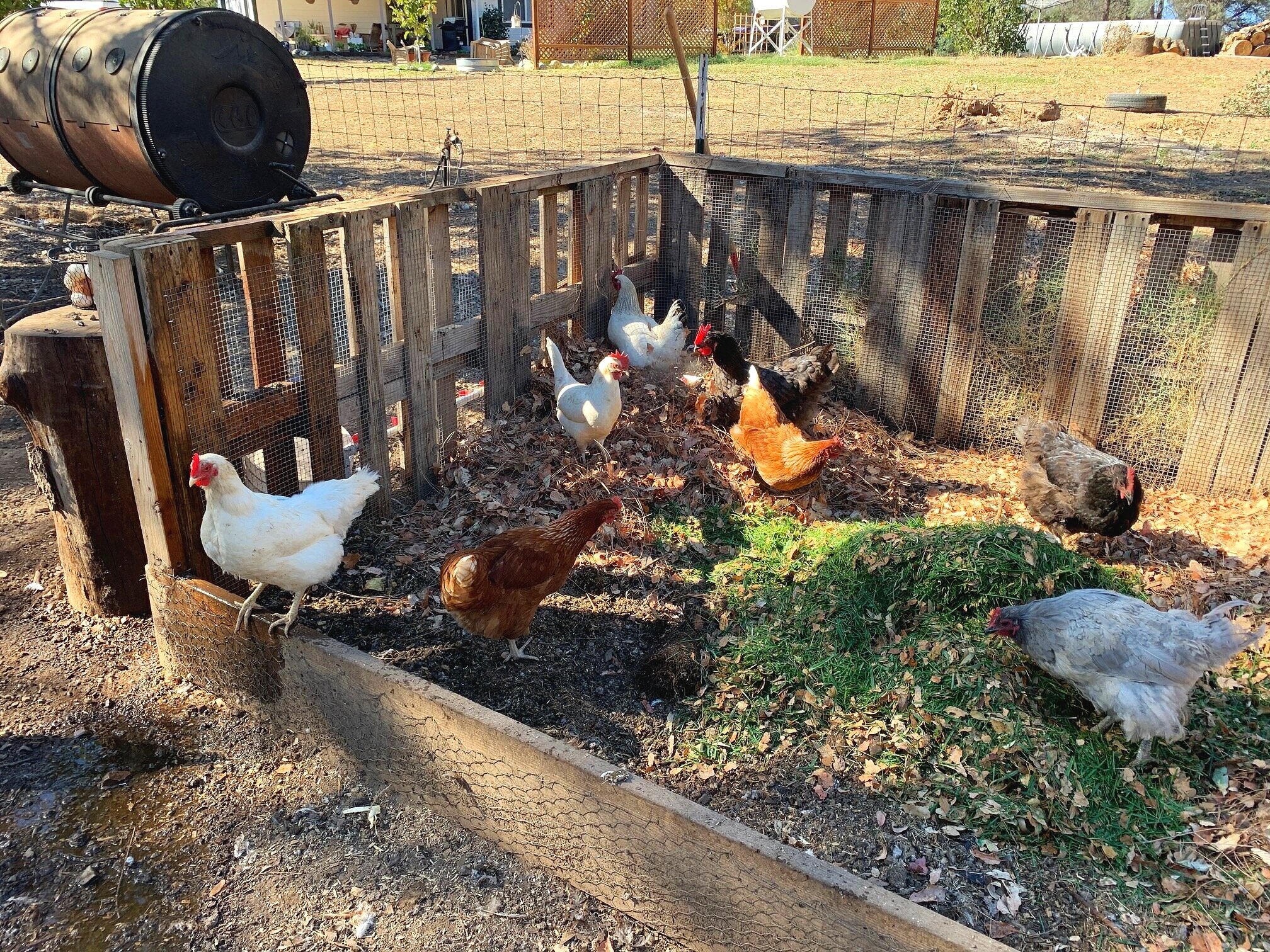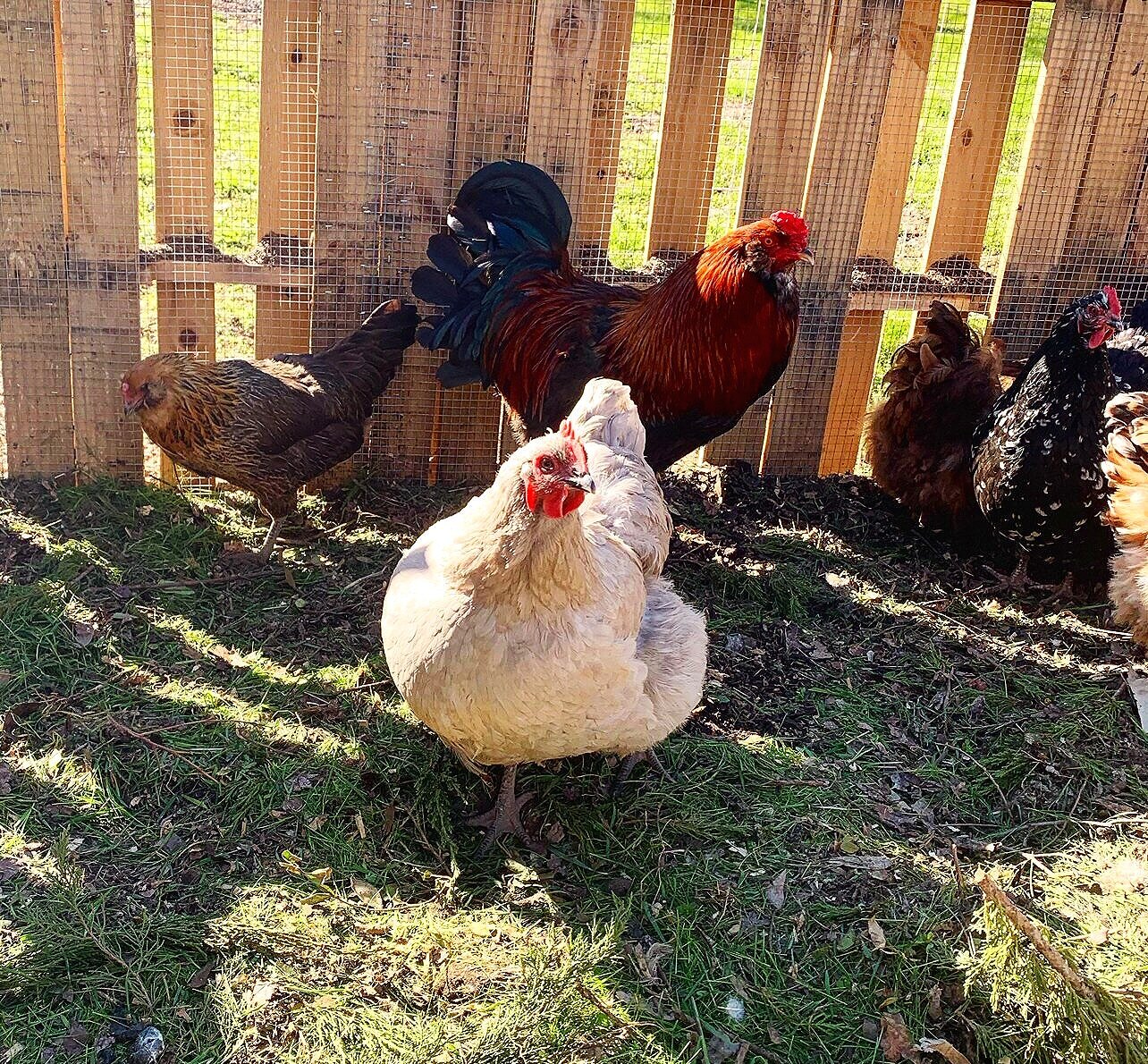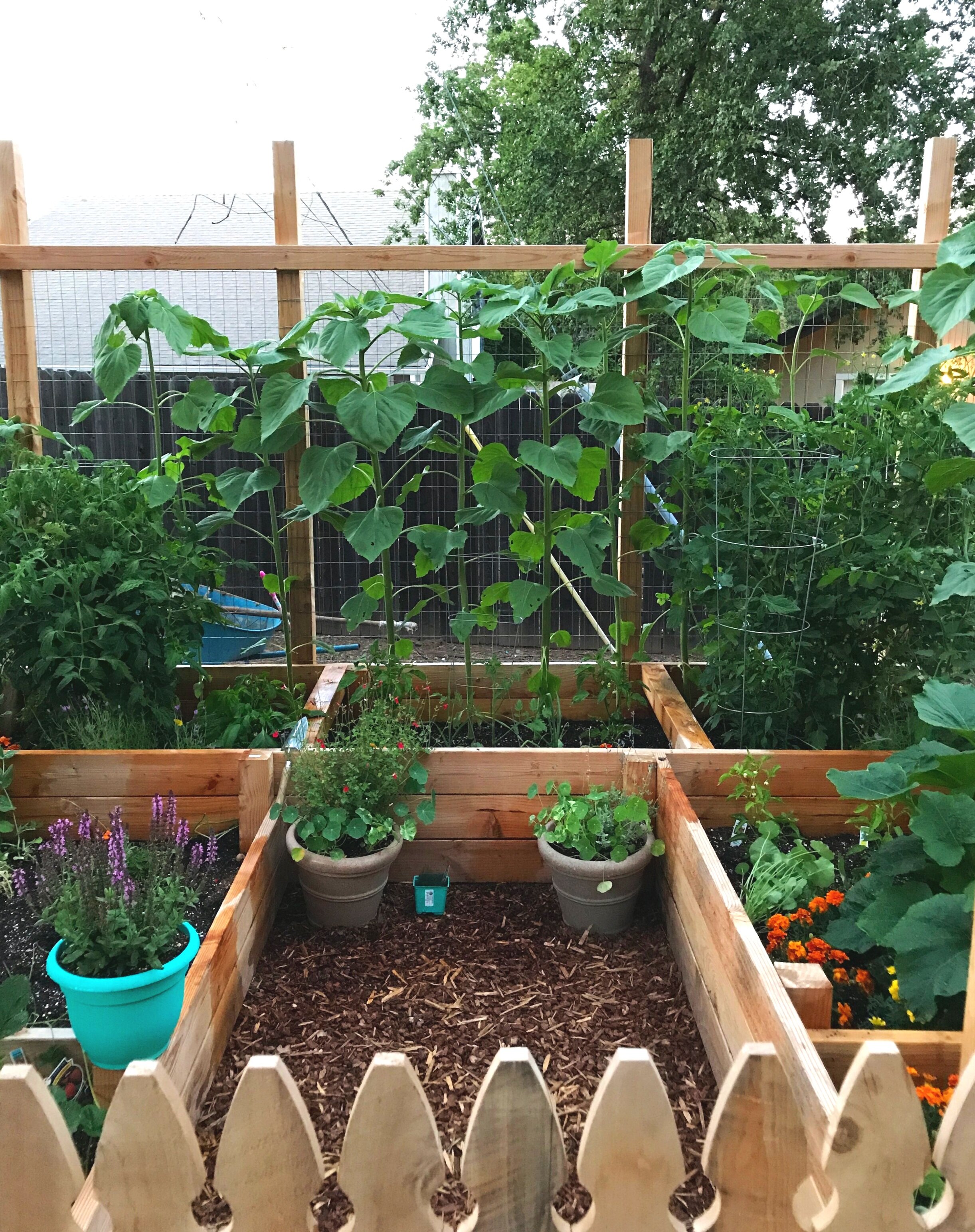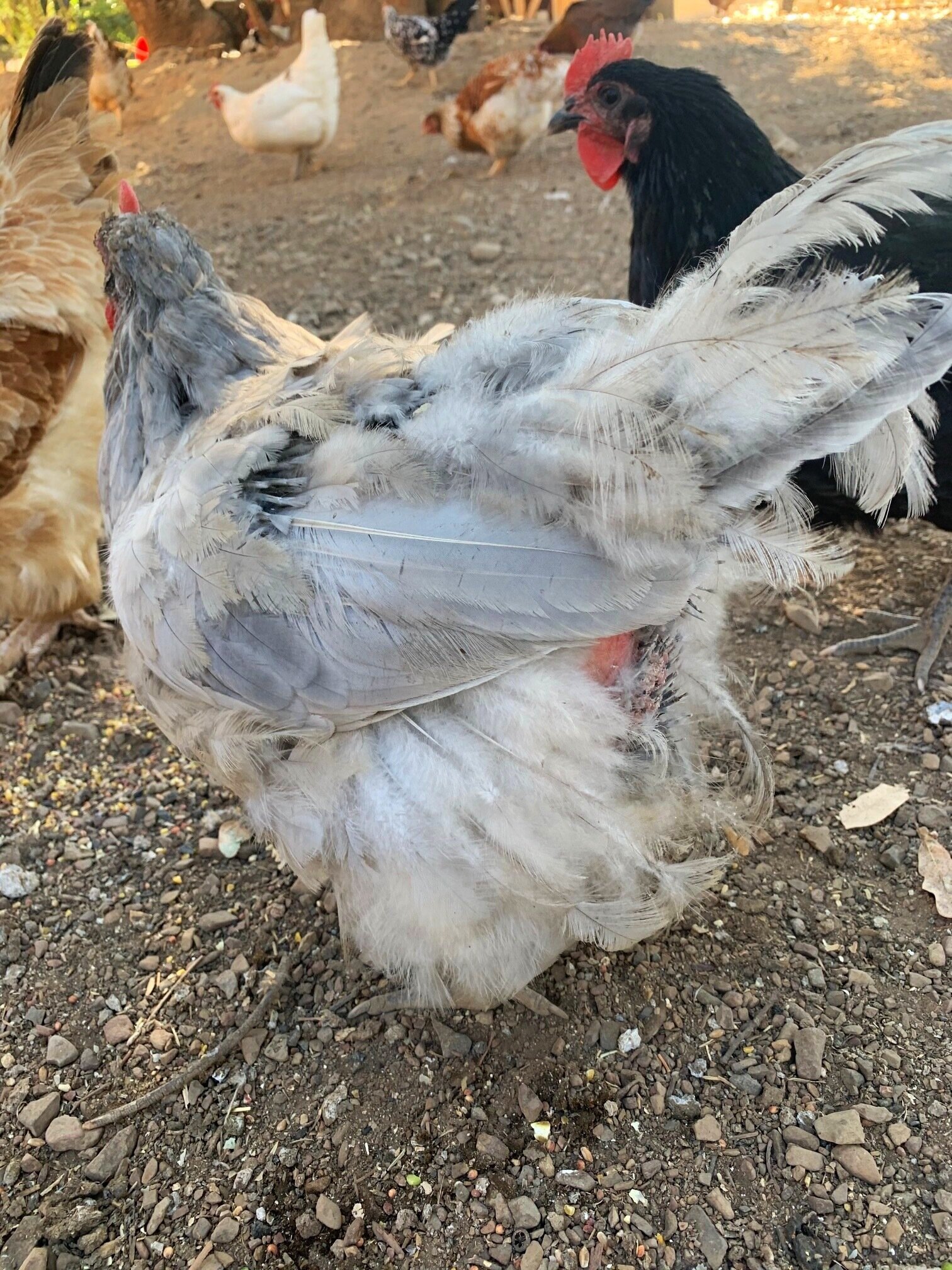What to consider when building your coop.
We have had a few chicken coops over the years. My first coop was absolutely amazing…and elaborate. I wanted to do all the things when I got started with chickens. It was lovely though! Since then (and now that we have around 150 chickens), I have chosen to focus more on practicality and what's really needed, while still adding some cute touches.
This was when we were building my first coop.
We have had a few chicken coops over the years. My first coop was absolutely amazing…and elaborate. I wanted to do all the things when I got started with chickens. It was lovely though! Since then (and now that we have around 150 chickens), I have chosen to focus more on practicality and what's really needed, while still adding some cute touches.
There are so many things to consider when deciding on what type of coop you want to build for your chickens. But to be straight to the point and to make it easy for you, these are the most important.
First you need to consider security. When the chickens are contained, they need to be safe from any potential predators, including (hopefully not) other pets at home such as a dog etc.
Space needs. Each chicken ideally should have 4 sq ft per bird when they are contained, unless they are only locked up at night and able to free range a larger area during the day.
Accessibility. You are going to need to be able to get in and clean the coop adequately and preferably easily. So, consider if you can get in with a shovel, rake etc. and move around without banging your head, shovel or whatever else.
Ventilation. Air quality is important for your chicken's respiratory health, so you want to have your coop properly ventilated. This means a cross breeze at all times if possible, while still being able to shelter your birds during harsher winter winds, rain or snow. You want a breeze to flow through but block the harsher winds, rains etc.
Placement of the nesting boxes and roosting bars. There are a lot of different designs, but mostly focus on making the nesting boxes a bit more private, out of the way and make sure each roosting bar is around 18inches from each other. The chickens will have a tough time moving around each other and settling in easily if it's too tight or the bars leave the chickens stacked on top of each other.
Environment. Do you live in a warmer climate with mild winters? Keep the hotter months in mind when designing your coop, meaning shade when it’s hot out, lots of ventilation and wind/rain protection in Winter. If you live in the opposite, then consider only enough ventilation to keep dampness under control and air quality healthy but build it enclosed in a way that will trap warmth more efficiently and keep the harsh Winter cold out.
Location. Lastly, you want to consider where you will build the coop. Chickens (like many farm animals) attract flies, so you may not want it too near your house. You also don't want it too far away so feeding and chores are easy to accomplish and also allows you to hear if something happens in the coop, such as a predator etc.
Like I said, there is a lot to consider when building your coop, but with a little forethought and planning, you can set yourself up for success from the beginning and have fun along the way!
Baby Chicks 101
Spring will soon be here and for many of us, you know what that means…it’s baby chick Season!!! Having baby chicks for the first time is SO MUCH FUN!!! Well, it’s always fun even if it’s not your first time. My girls and I still get excited over them every time a new baby is hatched or we pick up a box from the post office! Sigh…so sweet. Now, if you're reading this before getting chicks, great job!
This time I used a metal planter bed as a brooder.
Spring will soon be here and for many of us, you know what that means…it’s baby chick Season!!! Having baby chicks for the first time is SO MUCH FUN!!! Well, it’s always fun even if it’s not your first time. My girls and I still get excited over them every time a new baby is hatched or we pick up a box from the post office! Sigh…so sweet. Now, if you're reading this before getting chicks, great job! You'll know ahead of time what's needed to get you set up before you're at the feed store buying them, haha!
Here's what you'll need to get started:
A brooder box. This can be a large Rubbermaid tub or something similar. You could also set up something more permanent in your coop or designated chicken area if you plan to keep raising birds. That’s what we ended up doing since we have a steady supply from raising meat birds.
Pine shavings or straw
A water container
A feed container
A heat lamp or light bulb for a consistent heat source
This one is optional, but I also add about 1tbsp of apple cider vinegar to their water to help prevent pasty butt, which happens sometimes from the stress of the transition home.
This is our built-in brooder that is in one of our chicken coops now.
Baby chicks need to be kept at around 90-95 degrees, 24 hours a day for their first week of life, slowly reducing the heat about 5 degrees each week until they are feathered and able to maintain their own body heat. You can reduce the heat by moving the light further away each week. You'll know your chicks are the right temp by observing their behavior. They are too cold if they are huddling together in a ball under the warmest part of their area. They are too warm if they are trying to get as far away as possible from the heat source and their mouths are open gaping. They are just right if they are dispersed around the brooder, some eating, some drinking, some face down in the shavings sleeping, or all spaced out sleeping happily.
Raising baby chicks is really simple and a lot of fun. Consistent care each day, making sure they always have access to fresh food and clean water at all times goes a long way and should help you to avoid many issues. On occasion, sad things do happen though, despite our best efforts…baby chicks are super fragile little creatures. But don't let that discourage you, the payoff is well worth it and the enjoyment you'll experience from watching them grow and eventually going out and collecting their beautiful, fresh eggs, is a gift that keeps on giving.
Enjoy!
Deworming your chickens
One thing I never really thought about when I got started with chickens was that they would need to be de-wormed. Since chickens scratch and peck all over the ground, often sharing space with other farm animals and even wild birds, they will inevitably come in contact with parasitic organisms that are in the manure of those other animals. Hence, the need for deworming.
One thing I never really thought about when I got started with chickens was that they would need to be de-wormed. Since chickens scratch and peck all over the ground, often sharing space with other farm animals and even wild birds, they will inevitably come in contact with parasitic organisms that are in the manure of those other animals. Hence, the need for deworming.
As with every other topic we have discussed so far, there are many methods for deworming, naturally or medicinally, but I am going to discuss what I do and why I choose to do so. I always try natural, organic methods for everything I come across in raising animals, only resorting to medical solutions as a last resort (which is almost never.) The method I show you here is one that I personally use and know to be effective and support the overall health of my birds.
Here is what I use (ratios mixed per 40-50lb bag of food):
2 Cups organic cracked red pepper
2 Cups food grade Diatomaceous Earth
1 Cup Powdered garlic
I also add 8 drops of Oregano essential oil per gallon of water in their waterer.
At a minimum, this should be done quarterly to keep your birds healthy and parasite free. A heavy parasite load can not only stop your birds from laying, but could actually kill them. (Not to mention pass off some nasty critters to you. Gross.)
I personally do it on a monthly basis from late February through Summer, when parasites are more readily found in the environment.
Adding light to your coop in Winter
As the days grow shorter and the weather cools, you may have noticed a decline in egg production. This is completely normal and happens each Fall and in to the Winter months. You may be wondering if it is possible to keep your chickens laying through the Winter and the answer is yes, you can. All you need to do is add light to their coop for a few hours a day as the sun begins to set. But just because it's possible, doesn't necessarily mean it's the best choice. Let me tell you why.
As the days grow shorter and the weather cools, you may have noticed a decline in egg production. This is completely normal and happens each Fall and in to the Winter months. You may be wondering if it is possible to keep your chickens laying through the Winter and the answer is yes, you can. All you need to do is add light to their coop for a few hours a day as the sun begins to set. But just because it's possible, doesn't necessarily mean it's the best choice. Let me tell you why.
Chickens, like humans are born with all the eggs in their ovaries that they are capable of producing in their lifetime. So, once those eggs are gone, the chicken is done producing eggs and you'll need to decide if it's worth keeping them around for the remainder of their years without giving you eggs for your effort. It may sound mean, but it's a reality for a lot of chicken keepers.
Also, laying eggs consistently requires a lot of energy from your hens. Usually your hens will go through their Fall molt and then either resume minimal egg production through Winter or stop laying altogether for a few months, usually until February.
I'm a proponent for natural cycles in life that allow our bodies to rest. This is why I choose not to add light to my coops in winter. I also prefer to prolong their laying years. It's a lengthy process to raise baby chicks up to laying hens and I would rather give them their natural rest cycle and enjoy their eggs for as long as possible.
So then, what other options do you have to keep your egg supply up, even throughout the winter? My suggestion is to create a mixed flock, adding birds that are winter hardy and producers even in the colder Winter months. I added some specific breeds to my flock recently that continue to lay even with the shorter days and colder weather. Here are my suggestions on which breeds to consider.
Rhode Island Reds
Wyandotte's
Delaware's
Faverolles' (my favorite!)
Sussex
New Hampshire
Whether or not you decide to add light to your coop or not, now you have some options to aid in making that decision. Keeping chickens for eggs is a practical decision for many and creating a mixed flock is a great way to meet your egg needs as well as supporting the natural cycles your chicken's body needs.
Composting, let’s talk some more
Ok, so we have talked about the basics on how to compost in the post I wrote titled Composting 101. Now let's talk some more on how extensive the list is on what all can be composted.
An example of the finished product.
Ok, so we have talked about the basics on how to compost in the post I wrote titled Composting 101. Now let's talk some more on how extensive the list is on what all can be composted. We know that we want to keep our pile at around 75% brown material and 25% green material, but you may be surprised at just how much stuff can be composted instead of thrown away. Here's a list to help get you started.
Brown materials, also known as carbon materials include:
Fall leaves
Dried Pine needles
Twigs, chipped tree branches/bark
Straw or hay
Sawdust
Corn stalks
Paper (newspaper, writing/printing paper, paper plates and napkins, coffee filters)
Feathers
Dryer lint
Hair, fur (yes, even from humans as long as it isn't dyed)
Cotton fabric
Corrugated cardboard (without any waxy/slick paper coatings)
Dry, dead plants from last season's garden
Green materials, also known as nitrogen materials include:
Grass clippings
Coffee grounds/tea bags
Vegetable and fruit scraps
Fresh tree/shrub trimmings
Any fresh material from pruning indoor/outdoor plants
Annual weeds that haven't gone to seed yet
Eggshells
Animal manures (cow, horse, sheep, chicken, rabbit, etc. No dog or cat manure.)
Seaweed
Any produce that has gone bad in your fridge
The pulp from juicing your fruits and veggies
Garden waste from dead plants, bug damage etc.
Random things that are less often thought of to compost could include expired vitamins, spoiled fruit juices, dried blood (from animals you may have processed and dehydrated) and even menstrual blood and products (gross, but true).
Some things you want to avoid putting into the compost include:
The pits (seed) from things such as avocado, peaches, plums etc.
Any meat
Animal fats, oils, butters
Bread or grains in anything more than minimal quantities
Weeds that have gone to seed
Anything you have used that has cleaning chemicals or any other chemical on them, such as paper towels, rags
Anything plastic, glass, metal or rubber
Manure from cats, dogs or any other carnivorous animal
Anything with adhesives on it
I’m sure there is more that can be added to the list of what can be composted, but now you have a head start on many day to day items that you can compost instead of throw away. In this case, someone’s trash truly can become treasure since compost is black gold to a gardener!
Happy composting!
So…I cried.
Goodness, today was just one of those days! I'm sure you know what I mean by that, right? It was a day when I had more problems than I had solutions for, more to do than hours in the day, more challenges than I had emotional bandwidth to deal with…one of those days.
Goodness, today was just one of those days! I'm sure you know what I mean by that, right? It was a day when I had more problems than I had solutions for, more to do than hours in the day, more challenges than I had emotional bandwidth to deal with…one of those days. So, what do you do with yourself when these days happen? I feel like it's different for me every time. Today though, I was able to go for a walk with a sweet friend (which always nourishes my heart) and then came home, made something to eat and afterwards, cried. Yup, I just cried. I cried because my heart was overfull and needed a release. I cried because I could acutely feel the tension between having a heart full of so many dreams and not having seen them come to pass yet. I cried because I could see all of what was demanding my attention and I didn’t know how it was all going to come together. I cried because even though I am always learning, today I just felt like I was failing. So, I cried.
Then, I stopped crying and went about doing some of the things that were on my to do list…because none of those things were going to get done just by crying. Animals still needed to get fed, laundry still needed to be washed, groceries needed to be bought and errands needed to get run. So, I did that and it was ok. My heart still feels heavy and I still don’t have everything resolved, but I do know that for every problem there is a solution and even if I haven't found it yet, it's there.
Another thing I did was to be intentional about doing a few small things that nurtured me. I treated myself to a favorite drink at a local coffee shop while I ran errands, I took extra time to love on my kids and hugged them a little longer than I normally would. I made sure to eat a good dinner and put fresh sheets on my bed for when I go to sleep tonight. Small, but very tangible things that do make a difference for me. Most importantly though, I chose not to take all of what was wrong with today as being something wrong with me. That can make all the difference on days like today. If we can make the conscious choice to not label ourselves or create our identity by our circumstances, it makes a difference in our ability to recover. Circumstances are always changing, for good, bad or indifferent. But who we are, our identity, does not have to be shaken by them.
So, tomorrow is another day and I'm choosing to look forward to it.
Grateful for tomorrow,
Tove
Growing fodder for your chickens
First of all, let's talk about what fodder is. Fodder is basically just taking some sort of seed, such as hard wheat, whole oats, or barley and sprouting it so it becomes a grass for your animals. This can be done very simply, but the benefits are exponential.
This is an example of the finished product.
First of all, let's talk about what fodder is. Fodder is basically just taking some sort of seed, such as hard wheat, whole oats, or barley and sprouting it so it becomes a grass for your animals. This can be done very simply, but the benefits are exponential. Some of the reasons people grow fodder are, it's a nutrient dense super food (think wheat grass that we get at the local juice bar), creates a food source that maybe wouldn’t be available year round, as well as cutting down on feed costs etc. I buy a 50lb. Bag of non-GMO wheat seed for around $15, which in turn results in about 300lbs of fodder. Compare that to what you pay for 300lbs of feed! I do it for all of these reasons, but also just because my birds really love it. It's hilarious to see 100+ chickens come running when I lay the fodder out, then watch them all scratch, peck and talk with their beaks full. There's a lot of chatter around feeding time with these ladies!
If you're interested in growing fodder yourself, here's what you'll need:
Fodder trays like this: (or something similar) https://amzn.to/34Ksm8G
Seed of choice. You can usually pick a 50lb bag of seed up at your local feed store. I use Bar Ale for seed and they offer it non-GMO, I grow it organically.
Once you've got your supplies handy, here's what you do:
Take the seed you'd like to sprout and put it in a bucket with water. You're going to let it soak overnight.
The next morning/day, take the seeds and pour them into your sprouting trays, filling them to about a 1/2 in depth.
Place the trays in a bright area where they will get sunlight and remain undisturbed by any curious chickens. This could be next to a window somewhere, or a greenhouse etc.
Water the trays every morning and evening until they grow to about 3-4 inches tall. You may need to water yours 3 times a day if you live in a dry, hot climate or only once a day if you live somewhere more temperate.
Once the grass has grown to the desired height, you can just peel the grass up in sheets and feed the entire thing to your chickens. That's it, you’re done. Easy peasy!
Once you've got your process down, it's easy to stagger your fodder growing so you have a few trays ready every few days, or weekly etc. When I'm really on top of things (and its not 5000+ degrees outside!), I have fodder ready for my ladies (and gentleroos) every 4-5 days. The only time of year I don't grow fodder is when we have fresh grasses growing in late winter/early spring…or when my greenhouse is 130+ degrees in the middle of Summer. Gross. Then it's nearly impossible for anything to grow, despite watering it multiple times a day.
Anyways, there you have it. You are all set to grow fodder on your own. Your clucks will thank you!
Kombucha round 2-second fermentation.
Ok, so last time we talked about how to initially brew Kombucha in it’s first stage of fermentation in my post Kombucha like crazy. Now we get to talk about the best part, second fermentation. This is where you get all the flavor and the fun (carbonation).
These are the 32oz. growlers I use. They are great!
Ok, so last time we talked about how to initially brew Kombucha in it’s first stage of fermentation in my post Kombucha like crazy. Now we get to talk about the best part, second fermentation. This is where you get all the flavor and the fun (carbonation). Just to recap, you've finished your first fermentation and set aside your SCOBY and 1 cup of the Kombucha tea from the batch. You now have your large container filled with the remaining tea and get to decide how you would like to flavor it. I typically use fruit juice to flavor mine, but you can also use fresh berries as well. I've found that I get better carbonation by adding juice rather than berries because the sugar content is a little higher and it ferments further, which creates better carbonation.
At this point you can choose to flavor your booch in the container it's already in, or pour it into smaller individual serving size bottles. If adding juice to individual bottles, aim for about 1/4 a cup of juice for every 8 oz of tea. So, add the juice first then fill the remainder with your Kombucha tea. Make sure to leave a little space at the top of each bottle for when the carbonation builds so your bottle doesn’t burst. If you’re adding berries, just drop a couple berries in the bottom of the bottle and then top it off with your Kombucha tea. Mason jars are an option, other jars with lids or you can buy some bottles like I did here.
So far, my favorite juice flavors to add have been peach and guava. I have also made blueberry acai and pomegranate. Now, I’m also trying out pineapple and pineapple/peach. I'm sure I'll branch out and do more, but I tend to find a favorite and roll with it for a while. I just added some passionfruit vines in the garden this year, so if it fruits well, I may try that as well. I'll let you know how it turns out if I do.
Ok, now that you're finished, just put the lid on your jar or bottles and seal it tight. Put your bottles back into the cabinet where you did the first fermentation and give it another 2-3 days to further ferment. (Don’t forget to put a note with the date you started your second fermentation) Again, depending on temperature and taste preference, it may require a little longer until its ready, but that's it! You now know how to complete the second fermentation process in making Kombucha.
Enjoy!
What to feed your chickens
What chickens eat largely depends on how old they are and whether you are raising them organically or not. There is a lot of information out there on what to feed your chickens, but I'm just going to share what I feed my chickens and why I chose to do that.
This is the feed we use and some scratch that my clucks love.
What chickens eat largely depends on how old they are and whether you are raising them organically or not. There is a lot of information out there on what to feed your chickens, but I'm just going to share what I feed my chickens and why I chose to do that. I am not affiliated with any of these companies, just have used and been happy with their products.
When you first get your baby chicks, they will need what is called a starter feed. This feed is going to have a higher percentage of protein and can be either medicated or non-medicated. What's the difference you ask? Well, medicated feed includes one added ingredient that prevents your baby chicks from contracting a parasitic organism called coccidiosis, allowing them to build a natural immunity to it for later on in life. If you are raising your babies where they have ANY access to the outdoors where either wild birds are, or chickens have been raised previously, it is nearly a guarantee that coccidiosis is present in their environment and your chicks will be exposed to it. In that case, medicated starter would be best. If you are raising them indoors with no exposure, you can do non-medicated but they will still be exposed once moved outdoors and you may run the risk of them getting sick later and needing antibiotics to treat it. Personally, I start all my laying birds on medicated feed then switch them to organic after. The medicated feed only has a 2 week withdraw period so it's no longer in their system by the time they start laying. (For our meat birds, I feed them organic from the start and have them sprayed for coccidiosis at the hatchery before they arrive.) Starter feed needs to be fed to your babies for 6-8 weeks.
*Also, another bit of information worth noting is where you get your baby chicks from. If ordering directly from a hatchery, you can have them sprayed with medication that does the same thing as feeding medicated feed and then give them organic/non-medicated feed once you get them home. If you get your chicks from the local feed store, they will NOT be medicated or vaccinated and you will need to decide what you'll do.
After the first 6-8 weeks, you want to transition the birds to a grower feed. This is where I transition my birds to organic/non-GMO feed. I have also chosen, for the most part, to use corn and soy free feeds. I add corn on occasion in the colder months of Fall and Winter only, since it has a warming effect on the birds. I also always make sure the corn I use is non-GMO. I try to avoid soy altogether. If you're curious which brands I use, I have chosen both Bar Ale and Modesto Milling for our feeds. Keep them on this feed from 8 weeks until they are between 16-20 weeks old. (Fun fact for you: Juvenile chickens are considered pullets if they are a female under 1 year old and cockerels for a male under a year. After that they are a hen and a rooster.)
This is what I have started giving my birds this Fall and will continue through the Winter. It’s Bar Ale’s Ultimate Layer Pack. Beautiful feed loaded with goodies for your birds!
Lastly, you will put your chickens on a layer feed. You can choose a pellet or crumble, whatever you or your birds prefer. This feed will help support your hens as they begin to lay eggs and will provide the correct ratio of vitamins, minerals, fats, protein etc. that they need. This is the feed they will stay on for the remainder of their lives.
There are also many other things you can offer your chickens once they are pullets and older. These include leftover dinner scraps, anything you'd put in your compost, growing fodder for them, any grasses, bugs and other goodies they find while free-ranging, garden produce that was inedible for you etc. It really is fun and helpful how much these gals (and guys) can eat, which means less waste overall. A win-win! I'll write more about growing fodder for chickens in another post soon. So if you're interested, keep an eye out for it. Also, you may want to consider giving your girls scratch. This is usually a whole grain mix, cracked corn or something along those lines. I usually stick to mostly whole grains and if I do add cracked corn, I choose non-GMO and do so only in the cooler months since it has a warming effect on the birds.
I hope this information was helpful for you. Please feel free to add comments or ask questions. I’d love to hear from you!
Blessings,
Tove
What about ducks? A mixed flock.
So, lets talk about ducks. The first time we got ducks, (yes, we got more and then some more and then…some hatched thanks to a very persistent mama duck) we picked up 6 mixed ducks, all straight run from our local Tractor Supply. Oh boy, we fell in love immediately! If there is anything on this earth cuter than baby chicks, it's baby ducklings!
Ok, so we've talked about chickens for a bit, but what about some of the other options you have for backyard flock? After we moved to this property, we decided to add a few ducks to our flock (and also ended up with a few turkeys…on accident but that's a story for another time.)
So, lets talk about ducks. The first time we got ducks, (yes, we got more and then some more and then…some hatched thanks to a very persistent mama duck) we picked up 6 mixed ducks, all straight run from our local Tractor Supply. Oh boy, we fell in love immediately! If there is anything on this earth cuter than baby chicks, it's baby ducklings! They do all the same things that adult ducks do, swimming, diving under the water, shaking their little tail feathers but in a miniature version. It's ADORABLE! But, let's move beyond the cuteness and talk practicality.
To start, ducks tend to be much more hearty than chickens. Of all the ducks we have raised, we have been able to raise them without incident. They also grow rapidly, much faster than chickens do, which means you can have them out of their brooder and into their designated area much sooner. They also can be great layers! Our ducks lay huge eggs, bigger than a jumbo chicken egg. Duck eggs are also excellent for baking and have a richer flavor than chicken eggs when cooked. This may freak a few of you out, but they can easily be mixed with chicken eggs until you get over it, ha! That's what we did and now my husband, daughter and dad prefer them over chicken eggs. Who knew?
Ducks are also fun! They can be trained from the start to follow you around. My girls loved having a trail of ducklings running after them around the property. They also are quite talkative. When it's feeding time, our ducks are happy to announce their pleasure over it to anyone within ear shot. Our rear neighbors have a running joke that their kids know it's ok to come play on the weekend once they hear the ducks in the morning!
Lastly, ducks can be raised right alongside your chickens. They don’t have any special requirements, such as a pond etc. only access to enough water to dip their heads under so water can roll down their back. They can even share the same feed with your chickens (just buy a mixed flock feed) and can also be shut up in the coop with your chickens at night.
There are many more reasons to consider adding ducks to your flock, but I think now you at least have some food for thought.
Enjoy!
Kombucha like crazy…
I really like Kombucha. I like it enough that I pretty much drink a glass or bottle daily. So, I've decided to finally start making my own.
I really like Kombucha. I like it enough that I pretty much drink a glass or bottle daily. So, I've decided to finally start making my own. This is something I've wanted to do for quite a while now but never got around to actually doing it. I think it landed on my mental list of 'things I'd like to do', but never made it over to the "I'm doing this" phase. Until recently. So, to prepare I watched a couple videos on YouTube and then my awesome neighbor (and friend) came over and walked me through it. It's actually super easy! It's also pretty fun when you get to the second fermentation when you get to flavor it and it becomes carbonated. So, now that it’s my chance to share, let me make it easy for you and walk you through how I make it.
Here’s what you do:
Step 1: Get your materials together. You're going to need a teapot, a large glass container, cheesecloth and rubber band, a wooden spoon, 8 tea bags of black or green tea, a SCOBY and some starter tea, and 1 cup of sugar. I got a great kit that had the glass container, cheesecloth etc. on Amazon, which made it really simple. Here's the link in case you'd like to do the same. I’ve also included the link for the SCOBY and starter tea kit.
SCOBY link: click here
Large brewing jars and cloth link: click here
Step 2: Fill your teapot and bring it to a boil. While you're waiting for the water to boil, take your large glass container and run it under warm water to get it ready for the boiling water you'll soon pour in it. Also, open all your tea packets and have them ready to go.
Step 3: Place the tea bags in the large glass container and pour the hot water over the top of them. (I use a wooden clothes pin to hold the tea bags together and clip it to the mouth of the container) Pour in the sugar and gently stir it with your wooden spoon until it mostly dissolves. Now just set the tea aside until it completely cools. (insert pic of this step)
Step 4: Once the sweetened tea has completely cooled, add more water to the jar, leaving just enough space at the top for your SCOBY and starter tea.
Step 5: Now it's time to pour in the starter tea and SCOBY. This is what makes all the magic happen! Your SCOBY should float at the top of the container, but if it sinks to the bottom, don't worry. A new SCOBY will start to form at the top of the brew in a few days. Then you'll have 2!
Step 6: Now place the cheese cloth over top of the jar and secure it with the rubber band. Carefully pick the jar up and put it in a dark cabinet, or shelf that’s somewhere out of any direct sunlight. It also needs to be at a temperature of somewhere between 75-85 degrees Fahrenheit consistently. A cabinet above your fridge or a kitchen pantry would work beautifully.
Now all you need to do is let it do it's thing. You can start tasting your brew to see how things are progressing around day 8-10. You do this by carefully inserting a straw down the side of the jar and placing your thumb on top of the straw once it's full. Then gently pull the straw out and put in a glass to taste. Never drink from the straw or sip directly from your jar. You don’t want to contaminate or introduce bacteria to your booch! Usually it takes 12-14 days for my first fermentation to be done. I tend to like mine a bit more on the vinegar side, not too sweet, so I let it sit a little longer. That's it! Now you know how to brew Kombucha in its first fermentation.
If you're wondering what to do once your first brew is finished, take the SCOBY out (with clean hands) and set it in a glass dish along with 1 cup of the finished tea. This becomes the starter for your next batch and the fun continues! Now you can start the process again so its brewing while you're enjoying the batch you just finished. With the remaining tea you can either put it in the fridge or pour it in to single serving containers and do the same. Or, you can flavor them and do a second fermentation. That's what I do and is likely what you're used to if you've been buying your Kombucha from the store up until this point. I'll write about second fermentation in another post soon.
If you are a serious Kombucha lover like me, I hope you try it out. I think you'll really enjoy the process, especially when you discover how easy it really is. Have fun and let me know how yours turns out!
Cheers!
It Takes a Village
Oh boy, if there is one thing I have learned as we have expanded our lives, it's that the bigger the vision and more you expand, the more help you need. My husband and I are pretty capable people and if there is something we want to do, we can usually make it happen. We are willing to learn and maybe even more importantly, we are willing to try…and fail if need be.
My friend Cory is amazing! How often do you find friends that want to come clean your coops with you?!?
Oh boy, if there is one thing I have learned as we have expanded our lives, it's that the bigger the vision and more you expand, the more help you need. My husband and I are pretty capable people and if there is something we want to do, we can usually make it happen. We are willing to learn and maybe even more importantly, we are willing to try…and fail if need be.
Over the past handful of years, since we have begun to raise animals (for fun and food) and expand our gardening efforts, in addition to upgrading our property and improving our home, most of the time I have a new idea of what I want to do and then tell my husband. The man is near genius in his ability to make my visions a reality. But, another reality is that he also works enough hours in each week to fulfill 3 full time work weeks. So, this means sometimes I just flat out need help. This is where one of the most incredible things has happened. We have developed community.
This hasn’t happened by our doing, it has literally come to us. Sometimes it has looked like my awesome dad coming over to help clean up the property, or a neighbor that saw we had 50 piles of woodchips that needed spreading and offered to come over with their tractor and spread them for us, or a friend that offered up their time to come learn how to clean chicken coops. Seriously, wanted to come clean chicken coops!! (If you don't believe in miracles… that my friend, is proof that miracles happen every day!) Other times a girlfriend would offer to come over to help plant flowers or pull weeds in my garden just because they wanted to get their hands in some soil, keeping their hands busy and their mind free.
This is a side of land stewardship that I never foresaw. I knew it was a passion of mine but had begun to allow it to become a burden I carried, instead of a joy I could share with others. What treasure I have found in allowing others to help me, finally realizing that it's a gift for them as well as help that I truly need. Plus, it just makes things so much more fun when you're doing it with friends.
I've also discovered that a lot of people are interested in what we are doing and want the opportunity to learn as well. I think many people desire to do the same but don't know how or where to start. I understand the feeling, having felt that way myself in areas that I felt were intimidating. There is so much to learn and its often easier with a resource to ask questions and even show you how. This has created an opportunity for me to help some people either get started on their garden layouts, begin composting or get started with chickens, simplifying the process and removing all the guesswork so people can make their desires become a reality too. It's a gift that keeps on giving and extends beyond them to the others they help in turn. I'm humbled and grateful for each of these opportunities and the community that has come around us in this journey. There's so much life in it that it helps me stay motivated to keep doing what we are doing and keeps me looking forward to the future.
So, cheers to the new people we will meet and the many adventures that lie ahead!
Kombucha…wait, Kom-who?
By this point, I assume most people either have tried, or at least heard of Kombucha. If you haven't, please consider this your official introduction…
By this point, I assume most people either have tried, or at least heard of Kombucha. If you haven't, please consider this your official introduction. Kombucha is basically a fermented sweet tea. It is made by taking sweetened tea and adding a SCOBY to it, then allowing it to ferment. SCOBY is an acronym for symbiotic culture of bacterial yeast. It is also what makes all the magic happen.
By mixing the sweet tea and SCOBY, it ferments and creates a delightful beverage that is full of probiotics and B vitamins, which are good for your gut and your brain. Adding fermented foods (think yogurt, kimchi, sauerkraut) and beverages (water or yogurt kefir, Kombucha etc.) can be highly beneficial for our bodies and aid in digestion and overall good health. You may be wondering if it could really be all that healthy if its loaded with sugar (sweet tea) and does it contain alcohol if it's fermented?? Great questions, I'm glad you asked.
During the fermentation process, the SCOBY feeds on the sugar, depleting the sugar content to a minimal amount by the time it is finished brewing. As far as alcohol content, sure it's possible that it could turn in to alcohol if you let it go long enough, but if you follow the typical fermentation times there is only a trace amount. We're talking somewhere around 0.5%.
You may also be wondering, why make it at home? I have had some funny conversations with people when we've talked about home-brewing Kombucha. I think images of old timey, backwoods Moonshiner operations come to mind for them. But, this is totally different and completely legal, haha! It's also very enjoyable! Making it at home may not be for everyone, but for us it has been great. We drink it often enough that at $3-$4 a bottle, we can easily spend a small fortune each month on it. Making it at home only takes a few minutes of my time and costs a fraction of the amount. Plus, you get to tailor suit the flavors to what you know you like and the options are endless.
Well, I hope you enjoyed reading this as much as I enjoyed writing about it. If you're interested in learning about how to make Kombucha at home, stay tuned for those posts which are coming soon! Also, if you have any questions about it, please feel free to email me or leave a comment.
Enjoy!
Seasons of life.
These last 2&1/2 years have been seemingly the least "productive" years of my adult life…but in reality, they've been the most transformative. Unproductive in the sense that I didn't "do" much. At least not that I formerly had been known for or identified with. In the years prior to this season, I had lived a very full and seemingly abundant life.
These last 2&1/2 years have been seemingly the least "productive" years of my adult life…but in reality, they've been the most transformative. Unproductive in the sense that I didn't "do" much. At least not that I formerly had been known for or identified with. In the years prior to this season, I had lived a very full and seemingly abundant life. I was self employed as a hair stylist and had a great clientele that I loved. I also taught group fitness classes, which gave me the chance to lead some of the most remarkable people through some pretty gnarly workouts, that were filled with laugh-crying nearly as much as sweat! I also had my home life, responsibilities as a wife and mother, my friends and other commitments as well. Life was full, I was productive. On a day to day basis I accomplished a lot.
But gradually, over those years, I lost my joy. I had been so goal oriented and driven, that I didn't see what I was missing. I finally realized that I knew what I did, but not who I was. I had spent all those years doing things that I mistook as part of my identity, rather than doing those things as a byproduct of who I already was. And so the longing for change began to take root, as well as the need to reorient, regroup and rest. I needed to find out who I was. The only problem was, I had no clue how to do that or what that would look like. The only thing I did know, was that my inner longing was intense.
And then our whole world radically shifted in a moment. We found out that a school we wanted our kids to attend had openings right then for each of our girls, spots that would likely be impossible if we waited until the next school year. So we decided to jump, and over the course of 3 weeks, closed my business, sold our house and relocated to a little town about 3 hours North from where we were.
When I look back, I wonder how we even navigated those 3 weeks. Or the first few weeks after. It felt like we were picked up in a whirlwind. And when we landed…I felt like I had been running a sprint and had my feet kicked out from under me, skidding to an abrupt stop. I was completely raw inside and out. Emotionally I felt like a freshly skinned knee that had been skinned again. I was so wound up from the 7 years prior that it took me 10 months to realize I had been given exactly what I had yearned for…a season of rest.
After I came to that realization, during the next year and a half, I began to heal. I healed through learning to express myself in new ways, building new friendships and doing a lot more of the things I loved but never had enough time for before. Things like just hanging out with my family, without an agenda. I also spent more time gardening, chicken keeping and giving our house and property a much needed makeover. This gave me the chance for my hands to be busy and my mind to be free. This is where I found out who I am. Because I had the chance to stop doing and start being.
While I was walking through these past couple years, I had so many days where I wondered if I had lost purpose or if what I was doing now had any value. I also had times where I felt completely insignificant. The part of me that knew I was created for more was at war with the part of me that longed for the anonymity I had grown so accustomed to. I would go on long walks with some of my dearest friends and cry about what my future held. Other times I would be perfectly content that my life could stay exactly the same forever and it would be enough. All of which was necessary.
Coming full circle back to right now, as I am getting ready to launch this blog, I can finally see what happened these past few years and why it was so necessary. In taking this time, I was actually living my life, not doing it. I was free from many of the things, that though they were good, had kept me from cultivating my life in a way that produced only out of who I am. I had been doing it backwards before by trying to be who I was by what I was doing. And by just living life, feeling like I was "doing" nothing, I ended up with the capacity to share my life with others by sharing what I love. So when it came to starting this blog, turns out I had all the content and material I needed to do it…just by living life, letting it sink in, and taking pictures along the way.
So, if you have been in a season of wondering what you are even doing, or wondering what your purpose is, I want to encourage you to be intentional with living. Be present in the moment you are currently in. Trust that what you are doing right now is part of the foundation you need for the next season of your life. You may not feel seen right now or very purposeful, but your life has value and this time is needed. And know that just by continuing to move forward each day, you will be ready for what your next season will bring.
Living life along with you,
Tove
Composting 101, the basics
This post is for anyone that is interesting in getting started or has just started venturing in to the world of composting. I have to say, when I started composting, what I enjoyed the most was that I would be able to really minimize our food waste, while turning it back into something that would feed our garden.
This post is for anyone that is interesting in getting started or has just started venturing in to the world of composting. I have to say, when I started composting, what I enjoyed the most was that I would be able to really minimize our food waste. I had also just started vegetable gardening as well and had heard that composting was like creating an unending source of "black gold" that would build up our soil and nourish everything we grew. That was enough to sell me on the idea and I jumped right in.
These are the most important steps for getting started and you can easily build upon them as you get the hang of things. First, you need to decide what type of container you want to use and where you are going to put it. Or, you can forgo a contained area and just do a pile. (I don’t recommend a non-contained pile if you want to keep animals out of it or easily be able to collect your finished product.) There are a myriad of different options to suit your desired and spatial needs. We chose to build our compost area out of wood pallets and lined the inside with construction mesh. If you are interested in doing the same, make sure when collecting your pallets that they are not made from treated wood. Treated wood contains chemicals that can leach into the compost and contaminate it. You can tell they are clean by looking at the stamp that is on the pallet itself. These are the stamps you want to look for and what they mean:
The treatment code : [HT] = Heat treatment / [MB] = Methyl Bromide / [DB] = Debarked / [KD] = Kiln Dried. DB (Debarked) and HT (Heat-treated) Above are the two most important information to check on the pallet stamp
(For further pallet info, check out this link: Click here for more information.)
Avoid ANY pallet that has MB stamped on it!! Heat treated, kiln dried and debarked are fine usually. I'm no expert, but this is the information I used when selecting my pallets. I encourage you to look at the link I posted above as well as do your own research until you feel confident you're making a good choice:)
This is our compost bin in the chicken coop. You can also see out tumbler off to the left. It’s years old but still works as well as the day we got it.
You can also choose to purchase a bin or tumbler. If choosing a bin, try making one from untreated wood you have lying around or chemical free pallets, if you have the space for it. Or if you live in a more compact space, a bin like this would be great! Here's the link. The difference between a bin and a tumbler is with a bin you’d still need to manually shift the pile around and the tumbler has a handle you can turn, taking a bit of the work out for you. I have both, a large bin made from pallets and a large metal tumbler for when I need to get finished compost more quickly.
As far as a tumbler, this one is the route I would lean towards in choosing a tumbler being that it’s metal, BPA free and would hold up well in all seasons. Click here for the link. My husband always reminds me to make the best possible quality choice as my first choice so I don’t have to rebuy something once it either breaks or falls apart because it’s cheaper. He’s always been right. Sigh…the man knows his tools!
Here we just added some fresh grass clippings and a bunch of fallen oak leaves and pine needles. Thankfully fallen leaves are in abundant supply right now.
Now you get to start collecting your materials while you wait for your container to arrive or are building one. To make things really simple you only need 3 things to compost successfully: brown materials, green materials and water. Brown materials are things such as dead leaves/needles, cardboard, paper products, dead garden plants etc. These materials are carbon producers in the compost. Green materials are fruit/veggie scraps, animal manures (non-carnivores only!) fresh grass clippings etc. These things are nitrogen builders for your compost. Ideally, you want to always shoot for a ratio of 75% brown materials and 25% green. This will keep things balanced and not too hot, allowing for the beneficial microbes and all the goodies to grow during the decomposition process.
Lastly, now that you have your materials all added together, its time to water your pile. You want to always keep your pile damp. If it gets too dry, it will slow the decomposition process and everything will just dry up and not break down. You don’t want it soggy or too wet either. Try to shoot for it feeling moist when you touch it but not so damp that your hand is wet after touching it. After watering it, you want to turn the compost, mixing everything up so its evenly moist throughout the whole pile. Turning the pile allows for oxygen to get in, which is a crucial step in the whole breakdown process. The microbes that cause the materials to break down need oxygen to survive, so turning the pile ensures they have what they need. Aim to water and turn your pile 1-2 times a week or any time the pile starts to look dry. I have found this tool to be extremely helpful in turning my compost, rather than a pitchfork or shovel. I also use it to spread the woodchips in my garden. It’s fantastic! Click here for the link.
These girls love when we add fresh grass clippings to our pile! Another reason why I grow fodder for them regularly.
If you have chickens, another great time saving option is to put your compost bin in your chicken run and let your girls do the turning and work for you! (and as you can see, I can’t even get a picture without having my girls front and center!) Then all that's left for you to do is to water it as needed. How often you water is dependent upon the season and how wet/dry it is. Also, how quickly your compost breaks down into useable compost will depend on the temperature and moisture level. You can do more research and find out the ideal composting temps etc. by doing a quick Google search if you like, but I've found that as long as you keep adding material, watering and turning your pile, nature does its thing and soon I have beautiful, nutritious compost that my garden and fruit trees love.
Happy composting!
So, we got an Airstream.
So we got an Airstream. We were given one actually. Yes, you read that right…given one. I know, it blows my mind too. I mean, who just GIVES someone an airstream trailer? Someone amazing, that's who. And we turned out to be the grateful recipients of it. If your curious of how things went down, I'll share a few details.
So we got an Airstream. We were given one actually. Yes, you read that right…given one. I know, it blows my mind too. I mean, who just GIVES someone an airstream trailer? Someone amazing, that's who. And we turned out to be the grateful recipients of it. If your curious of how things went down, I'll share a few details.
On Mother's Day of this year, my husband, parents and I were all sitting outside chatting. We were talking about how incredible it would be to have a trailer on our property that we could convert in to a guest house. We were thinking a retro style trailer that we could buy cheap and fix up to our liking. We talked about what we would do with it, where we would put it, design ideas etc. Then my husband says something along the lines of how cool it would be to get an Airstream trailer. A vintage/retro Airstream trailer that we could completely renovate. We left the conversation full of dreams and ideas, but were content to leave it there.
About 2 weeks later, my husband calls me and says one of the contractors he works with had an Airstream trailer that he needed to get rid of. They had planned to make a mobile brewery out of it, but after the whole Covid-19 shutdown, decided not to. He said it could be in rough condition and had been completely gutted, but may end up being the blank canvas we wanted to create our own vision. We agreed he would check it out and then decide.
Here is the interior-a blank canvas!
Long story short, a few weeks later my husband had checked it out, decided it was a go and got it ready so we could tow it home. The owners said they may need my husband's help with some electrical work in the future, but other than paying to transfer registration, it cost us nothing.
Now, I'm not naïve enough to think it's not going to cost money to fix it up and make it a useable, enjoyable space, but I can't help but marvel at how this whole thing came about. One major takeaway for me is the realization of how important it is to dream together and put words to those dreams. How real the power of our words are in making stuff manifest in our lives, or become our reality. At the very least, this happening for us made me pause and reflect on what other dreams I have had tucked away or dismissed as some fleeting thought. What if those dreams are supposed to become our reality as well? I have to admit, it's got me excited to find out. Maybe it’s time to take some lids off of boxes that I’ve stored in my heart.
How about you? What dreams have you tucked away, dismissed or neglected to put words on? Maybe it's time to start talking them into reality. I encourage you to find out.
Adventuring together,
Tove
Where it all started…
About 5 years ago, after doing a shared garden with a dear friend on her property, I developed a budding desire to start a vegetable garden of my own. So, I shared my ideas with my husband and as he often does, he indulged me and got right to work.
Our first garden was so sweet!
About 5 years ago, after doing a shared garden with a dear friend on her property, I developed a budding desire to start a vegetable garden of my own. So, I shared my ideas with my husband and as he often does, he indulged me and got right to work. At that time we were living in another town, on a decent sized residential lot. We decided on a 10ft x 10ft raised bed garden with a gate, so the chickens wouldn’t get inside and destroy everything. Looking back, it really was a great little garden. I really didn’t know anything about gardening, (despite having a shared garden the year prior) and anything else I had attempted previously, only built a case against me that proved I did not have a green thumb. But that wasn’t going to deter me because I wanted to garden. I was going to garden. And it was going to be great. Period. (oh boy…)
That first Spring, I planted tomatoes, sunflowers, zucchini, bell peppers, strawberries and some snap peas. I think that’s often pretty standard for a beginner gardener. Before I knew it everything was growing beautifully! I was pretty pleased with myself because gardening was obviously my thing, right?! Sure it was…until reality hit. First, I noticed some weird eggs on my squash that I later learned were squash bugs. Then I kept seeing these green caterpillars and they were devastating my tomato plants! Later I found out they were hornworms. In a panic, I quickly researched what the pests were and how to get rid of them. I wanted to garden 100% organically, which ended up being a bit tedious in the way of pest control and I still lost quite a bit of my plants. This sent me on another journey into what to do to prevent them and is how I learned about companion planting and other best practices, since prevention is far better than treating issues after the fact. (If you're interested in learning more about companion planting as pest control, hang tight because I’ll be posting about that soon as well.)
Fast forwarding to our garden now, I so appreciate the simplicity of that little garden and learning from those mistakes while on a small and manageable scale. I value those experiences so much because they were the launching pad in to what we are doing now. It would have been overwhelming and likely defeating if we had encountered those issues on a much larger scale. My hope in sharing the mistakes we made and challenges we faced, is for others to have a ready resource that can answer their questions, so they can be successful from the start. Gardening is so rewarding and teaches us so much!
How our current garden started when we first moved here.
When we moved to this house, we got a little bit of property and our current garden is now 8,000 sqft. It started as another raised bed garden that was 24ft x 24ft, but we quickly outgrew it and expanded to what we have now. Currently we have 11 different types of fruit trees, myriads of fruits and vegetables and I am constantly trying new plants, just to see if I can have success with them and continue to diversify our food options. It's a constant evolution with an end goal of being able to have a year round garden so we can eat seasonally, rather than just based on what we would buy at the store because that’s what we know and have always done. It also gives us a great opportunity to try out new recipes that we otherwise wouldn’t likely have tried.
Our current garden…which we are still working on growing in to.
Our plans for the Spring include a vineyard on our front pasture. I've been preparing the ground with a heavy layer of woodchips and leaf mulch this summer and plan to have it going next year. I'll share more about that as we make progress. Stay tuned…
Molting…why your chickens have bald patches.
If you're a seasoned chicken keeper, this isn't going to be news to you. But, if you are newer to it and haven't had chickens for more than a year, then this will be some good information for you.
This is an example of a soft molt. Poor girl looks a little rough…
If you're a seasoned chicken keeper, this isn't going to be news to you. But, if you are newer to it and haven't had chickens for much longer than a year, then this will be some good information for you.
Most people get their chickens in the Spring and raise them up through the Summer, usually having eggs before the Fall. The first year of your chicken's life is all about healthy growth and development, and of course for eggs! Then your daily chicken routine seems to fall in to a rhythm and flows accordingly. It's a beautiful thing. Once your chickens have reached their second Fall however, there's another addition to that flow. Molting Season.
(Bonnie is having a rougher go. I think she was a little miffed about having her picture taken in her current condition, I had to bribe her with mealworms for her to stay still for this picture!)
What does it mean when your chicken is molting? In simple terms, your chicken loses some, or most of their feathers and grows fresh, new ones. How many they lose can very from chicken to chicken and some may only lose a few around their neck, vent or back (a soft molt) or they may be darn near bald (a hard molt). Either way, it's completely normal and will become an annual thing from then on. It can look a little crazy in the yard with feathers all over, but shouldn’t last more than 2-6 weeks, depending on how hard their molt is. Also, if you have roosters, they typically never molt as severely as a hen will. I’m not sure why exactly, but they don’t. (the boys always get off easy, don’t they??)
These are great options to supplement and support your flock during their molt.
During the time your chickens are molting, it's important to supplement their diet with additional protein. You can do so by adding mealworms, supplement with scratch, or by buying a feed with a higher protein ratio just while they are molting. (You don’t want to keep them on a high protein feed when they are not molting because it's not good for their kidney's). I also like to grow wheatgrass or oat grass fodder for my birds along with adding mealworms. They seem to think it's pretty great, so I roll with it! (If you want to know how to grow fodder, keep an eye out for my post on it.) I also add kelp meal to their food during molting season and during any other time my birds seem to be under additional stress. I add about 2 cups of kelp meal per 40lb bag of feed.
Another thing to note during molting season is that your ladies will likely stop laying eggs during this time. It takes a lot of protein to grow feathers, so the chickens’ body will slow or stop egg production altogether in order to concentrate on regrowth. Once their feathers are regrown, egg production will resume until it slows again during the winter months.
This is from our rooster, not from molting.
Another little side note. There are other reasons your chicken could be losing feathers. Sometimes they will get a bald patch on their back from the rooster, depending on how attentive he is. Some guys are just rough on those poor ladies. Other reasons could be from the hen herself, plucking feathers out that were either damaged or dirty etc. They can also lose feathers from parasite issues that have become severe. These are much less common though if you’re taking adequate care of your birds. A quick, clear indicator if it's molting and not something else, is that molting nearly always happens in the Fall and will affect multiple birds from your flock to one degree or another.
Well, I hope you feel a little more informed of what's happening to your flock, or will be ready for when it does.
P.S. If you're wondering what to do with all those feathers in your yard and you've got a compost pile, throw them in there. It may take a while to break down, but they are completely compostable.




